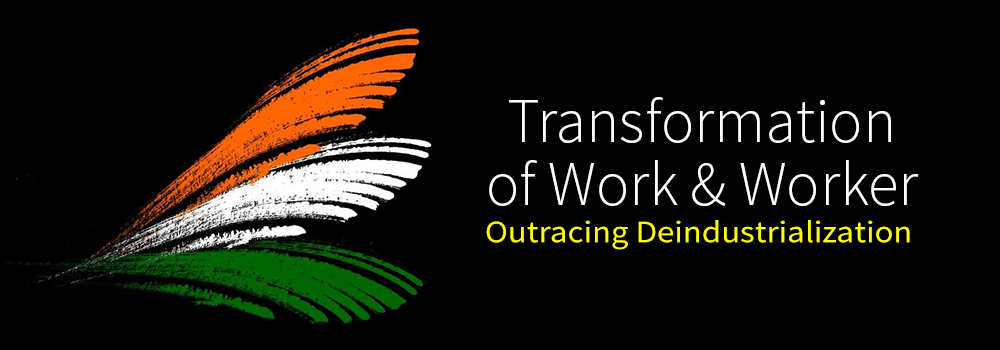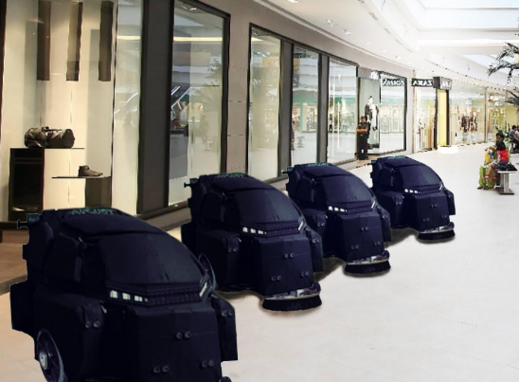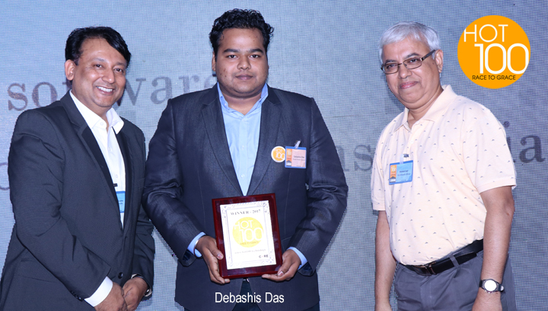
Nation Building with Robots in India
Paradigm change: Should a large nation go small and can robots be major drivers in that process?
Small is better for business…and people?
Arun Maira thinks that India needs a paradigm change in order to be successful.
Basically, he reasons that a mega, continent-size country like India with a population of 1.3 billion should avoid building massive, monolithic enterprises, think TATA, etc.
He advocates for a paradigm change in his article: A new vision for Make in India: Create a web of small, nimble enterprises.
Robots, 3D printing, automation, and just plain old “going digital” loom large in Maira’s vision.
Maira is a former member of the Planning Commission of India, as well as former chairman of the Boston Consulting Group (India), and spent twenty-five years at the TATA Group. In short, Maira knows his way around India, understands the country’s challenges and has a keen sense about how to navigate his homeland toward a successful future.
“New technologies are disrupting old concepts of manufacturing and old models of enterprises,” he writes. “They can enable new forms of manufacturing enterprises whose scale can be increased by the aggregation of many dispersed activities rather than the sizes of their factories.”
He sees the monolithic, Foxconn-type factories with tens of thousands of workers as counter to India’s best interests.
It’s a vision very much akin to what Harvard economist Dani Rodrik and other economists worry about: that for more than a century, bustling factories crammed with workers making the world’s goods have offered the quickest route out of poverty, but such industrialization is simply no longer available to today’s poorest nations. India included.
Maira’s thinking is that massive industry is not a viable solution for India: “The inertia that comes with their size makes them difficult to turn when the environment changes with new technologies, new customer requirements, and new competition. Innovation within them and entrepreneurship is dampened when the internal producers of value become employees of the monolith rather than owners of their parts of a large enterprise.”
He’s seen it happen already with 3D printing technology at an Indian pump and turbine factory; a technology that could eventually eliminate the factory entirely, and witness the transformation of turbine production into Maira’s “aggregation of many dispersed activities.”
In fact, as an extension of that thinking, he views the purchase of a single 3D printer for $1,000 as an enabling technology that could easily transform a factory worker into a business owner.
It seems then that any autonomous machine has the ability to transform work and worker alike. That’s quite the paradigm change.
As Bucky Fuller aptly put it: “You never change things by fighting the existing reality. To change something, build a new model that makes the existing model obsolete.”
BRS, a startup founded in 2013, produces autonomous cloud-connected industrial floor-cleaning robots for large-scale infrastructures. In March, BRS received the prestigious HOT 1OO: RACE TO GRACE 2017 Award, which champions innovation from the most promising technology startups in the country.
Cleanliness can be empowering…and profitable
The industrial, floor-cleaning robots at Bharati Robotic Systems (BRS), in Pune, a three-hour drive southeast of Mumbai, offer a real-world look at what such a paradigm change could mean for India.

BRS, a startup founded in 2013, produces autonomous cloud-connected industrial floor-cleaning robots for large-scale infrastructures. In March, BRS received the prestigious HOT 1OO: RACE TO GRACE 2017 Award, which champions innovation from the most promising technology startups in the country.

Debashis Das, founder, CEO, and chief change agent at BRS, shares a bit of Maira’s point of view: empowerment of people.
The BRS website declares that intention right up front: “We believe adoption of Robotics will re-structure the sectors & economy to create more quality jobs and increase efficiency in processes all around. Robotics will bring more harmony. Creating Robot for People!!”
The idea of developing a cleaning robot is both practical and entrepreneurial. For example, any individual owning a BRS industrial cleaner could well become an entrepreneur in a day.
Add a few contracts to clean shops in a mall, an airport, a railway station, even a government building, and the entrepreneur becomes a business owner with a book of businesses to serve. That new business owner could, in turn, hire one or two others to learn and profit from the industrial cleaning trade. That’s empowerment from the end-user perspective.
That’s what Arun Maira would see as new technologies disrupting old models of enterprise.
It’s disruptive from the developer’s point of view as well. Debashis, by driving the technology for that new model of enterprise, created a virtuous circle that’s beneficial to everyone.
Debashis had lots to say about his company, his robots and his country when he sat for a Q&A about Indian robotics. To read the part of the Q&A that was his take on robotics education in India, see also Robotics & Automation in a “New” India.
Question #1: Why did you decide on an autonomous, industrial floor cleaning robot as a Bharati product?
Answer: We wanted to make robots for practical applications, to solve real-life problems.
We were into the cleaning sector from our early startup phase, and had very good industry connection in the facility management and housekeeping services. Distributors and resellers also approached us to make such a robot.
We believe that the adoption of robotics will “re-structure” the cleaning sector and the economy to create a more robust and efficient process along with creating more quality Jobs.
Our target is to create a lot of quality jobs through our robotics solutions. We will release a white paper on that vision soon.
We are also working on many other robotics solutions in the industrial, defense automotive, and agricultural sectors; all in stealth mode. Through these projects we will play a role of “re-structuring and consolidation” of the respective sectors with the aim of increased efficiency and added value.
Question #2: How is your product unique from other floor cleaning robots? Any special engineering or technology?
Answer: We ensure 100% floor coverage. No teaching or training of the robot is required; it’s 100% autonomous. It has a solid build quality with robust safety mechanisms.
In addition to cleaning, we are also developing variations for wet scrubbing, floor buffing, vacuuming, and sweeping.
There are five capacity levels: 30, 50, 65, 85, and 110 liters for all floor and project sizes.
Plus, it’s humane looking and people friendly.
Question #3: What’s next on Bharati’s development agenda? Enhance your existing product line or develop another cleaning robot? Something completely different?
Answer: We are bringing out other variants and solutions for end-to-end cleaning solutions.
We are also bringing out products and solutions for other service robots: street cleaning; glass, window and wall cleaning, etc.
In addition, we are developing robotics solutions for the automotive, industrial, defense, and agricultural sectors.
Underlying everything is our core purpose and belief that robotics will “re-structure and consolidate” the sectors, and offer greater efficiency to the processes.
Question #4: The Bharati website reads: “We believe adoption of Robotics will re-structure the sectors & economy to create more quality jobs and increase efficiency in processes all around. Robotics will bring more harmony. Creating Robot for People!!”
What do you mean by that? Could you share some of your thoughts with our readers about bringing more harmony by creating robots for people?
Answer: Currently in the facility cleaning sector there is unprofessional approach (with labor): fatigue, high attrition rate, immobility, higher maintenance cost of manual cleaning machines, no centralized control and accountability.
With robots, there will be professional, high-quality cleaning; consistent cleaning with a reduction in low-skilled workers and/or extra manpower, accountable operations, and online reporting throughout. There will be lesser maintenance costs due to highly efficient robot service mechanism giving zero down time for customers.
In addition, payments from customers will also be in timely, proper and in a monthly bill cycle that will recharge and run the robots.
Question #5: Do you see India’s best avenue for success through the use of industrial robots, professional service robots or personal/home robots? Or all three? Any area in those three that you feel is a particular strength for Indian robotics?
Answer: It all depends on an individual entrepreneur’s interest and how he feels about contributing to nation building, and his vision of robotics and making processes efficient, in order to create higher quality jobs.
Personally, we see a lot of gaps in the system which can be fulfilled by robotics; hence we will bring out all those robots to make holistic solutions for different sectors.
Presently, the Indian government has no public National Robotics Policy. However, robotics is vital for nation building and keeping India ahead in the global perspective. There are huge opportunities and India is a virgin market for robotics in all sectors.
About Debashis Das
Debashis Das (LinkedIn) is founder and CEO of Bharati Robotic Systems in Pune, India.
He studied at Vishwakarma Institute of Information Technology. He was trained in SINE (an incubator at the Indian Institute of Technology, Bombay), along with being mentored and funded from INTEL INDIA.
Recipient of the HOT 1OO: RACE TO GRACE 2017 Award
Further reading:
Why Engineers Don’t Get Job in Indian Robotics Industry, Debashis Das
Simple Clarity on AI-Machine Learning-Deep Learning, Debashis Das
